We used the figures we've all painted for our ongoing Swedish-Polish War Campaign using the upcoming Pikeman's Lament rules.
While Pikeman's Lament is a skirmish game, Tercio is intended to depict large scale actions. The Tercio rules assume that the figures are on multi-fig bases, and our existing figures are mostly on single bases or based in twos and threes. But in practice this is not really a problem as long as the centre points of the units are readily identifiable. Tercio is originally written in Spanish, but we used the English version of it.
The armies in Tercio are divided into brigades, each with its own commander, all under the Control of a C-in-C.
At the beginning of each turn, units are assigned orders using order cards which define what the units will attempt to do.
Swedish C-in-C
Swedish infantry brigade w 2 Squadrons of heavy infantry (pike and muskets)
Swedish cavalry brigade with 1 Unit of mounted Arquebusiers and 1 Skirmishing Musketeer unit
Scots cavalry brigade with 1 Curassier unit
Scots infantry brigade with 2 battalions of heavy infantry (pike and musket/arquebus)
Scots light artillery unit
Polish C-in-C
Polish Elite unit: 1 Winged Hussars lancers
Polish infantry brigade with 3 units of Haiduk Musketeers and 1 unit of close combat halberdiers
Polish heavy cavalry brigade with 2 units of Pancerni lancers
Polish light cavalry brigade with 1 unit of light horse
Polish heavy artillery unit
(Note: there are no polish army lists available yet, at least not in English, so we just made up our own based on our knowledge of the period and extrapolated something that seemed reasonable).
We used about 1000 pts per side, apparently a standard size game for this rules set.
 |
| The brave Scots infantry brigade with two battalions supported by some Curassiers. |
The rules for commanders are quite extensive with many different traits that individual commanders can have. We forgot a bit of it (and probably failed to fully use our traits, even when we remembered them). Proper use of commanders and the Order cards are really crucial here. Fortunately, the whole thing is expained rather well. At the end of this game I think we had it down reasonably well.
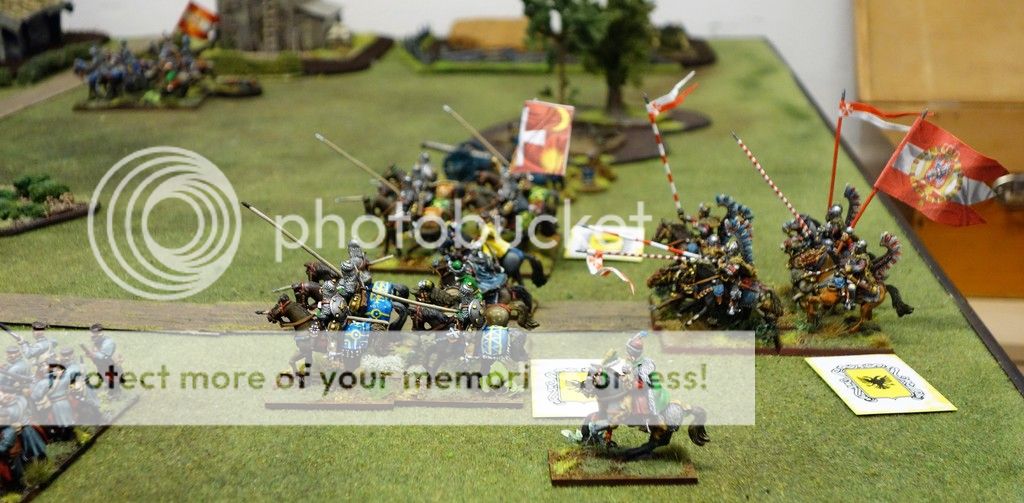 |
| The Polish host advances. The C-in-C himself is in the foreground while the Pancerni and Hussar lancers advance covered by the Haiduk musketeer infantry. Note the order cards. |
The Scots infantry is pretty standard for the period with decent firepower and good melee strength.
The Scots had a standard Curassier unit with sword and pistol while the Swedes had a single unit of mounted arquebusiers. Both pretty good units, but not spectacular.
The Polish heavy cavalry is awesome, though. As one of the few armies still using lances in the 17th Century (combined with lots of pistols, etc) they are quite simply the best there is.
The Polish infantry consists almost exclusively of Musketeers. This makes for good firepower, but not so great melee capability. The firepower of the Swedish infantry brigades is still superior, though.
 |
| Another view of the Swedish battle line showing both 'Squadrons' of the infantry brigade. |
The Poles had two wings, one of the few, but really good cavalry with the infantry at the other end.
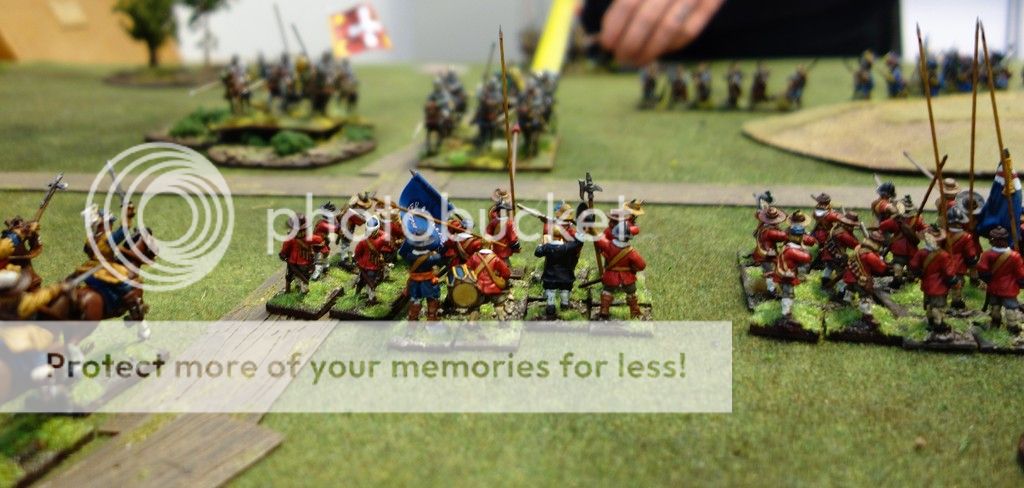 |
| The Scots infantry open fire at long range, but the Polish lancers just keep trotting forward. |
On the Swedish/Scots right flank, the Polish infantry trudged forward and engaged the Scots in a musketry duel. The Polish superior numbers began to tell almost immediately and the Scots infantry began to back away slowly.
At the same time, however, the Polish cavalry proved very aggressive. An initial advance by the Polish light horse was a mistake as it brought them into musketry range of the Swedish infantry, while still out-of-range of their own arquebuses. The Polish lights were not destroyed, but had to retire and would take some time to recover and return to the fight. Ouch.
In the centre, the Polish heavy cavalry moved forward as well. One of the Pancerni lancer units tried to move against the Swedish flank but was bogged down in bad terrain and subjected to surprisingly ineffective shooting while the second pancerni was forced to retire after failing a morale check.
But the Hussars were just behind the Pancerni and charged one of the Scots infantry units.
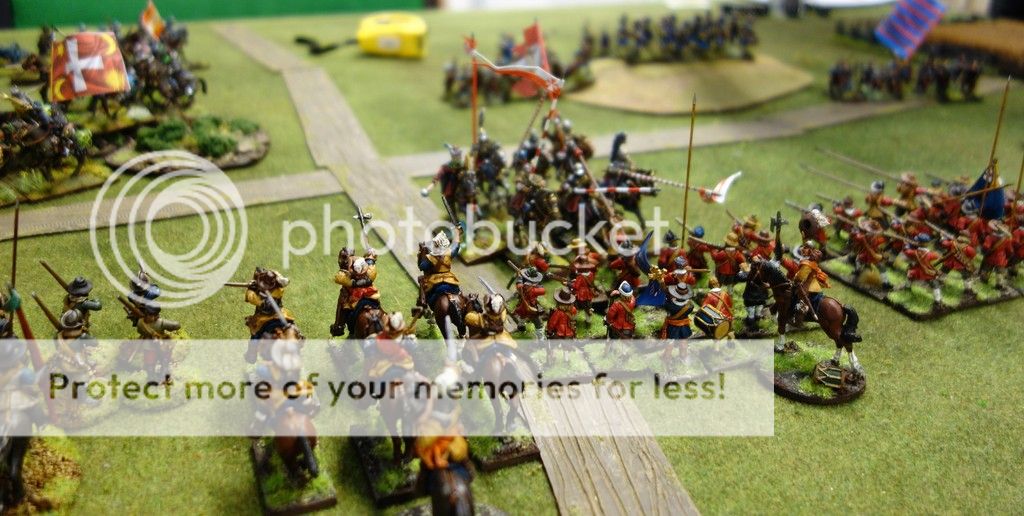 |
| The Hussars charge! The scots proved no match for these elite troops and the scots wre immediately destroyed. Ouch! |
Things were really not looking good for the Swedes and Scots....
 |
The Swedes pass the reaction test and manage to pivot and face the Polish charge. Both the Swedish and the Polish C-in-C join this crucial fight to urge their men on.
|
This was a very enjoyable game, and we got to use our beloved 30 years war figs in the different setting in of a large battle rather than a skirmish. The Tercio rules also worked well.
My only tiny grudge is that I am not really that fond of laying the Order cards on the table as it just does not look that good, but as a rules mechanic it actually works quite well.
The movement and the results of the various combats all seemed quite plausible, leadership is very important. And the game did not last overly long, even with allthree of us new to the rules and having to look things up in the rule book quite often.
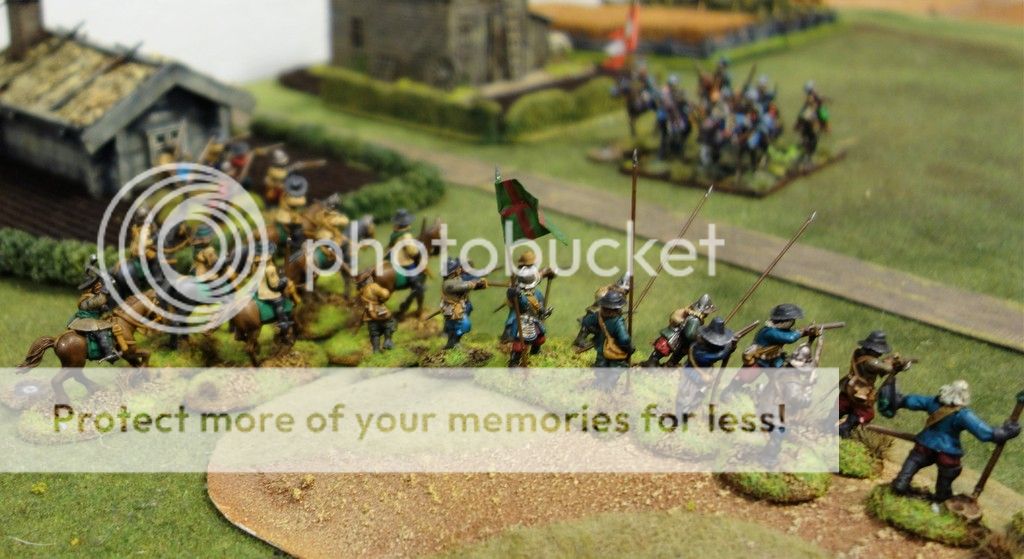

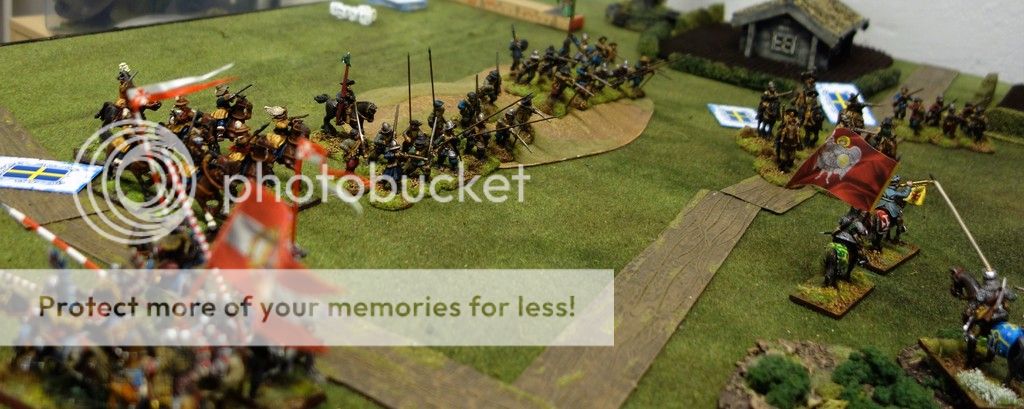
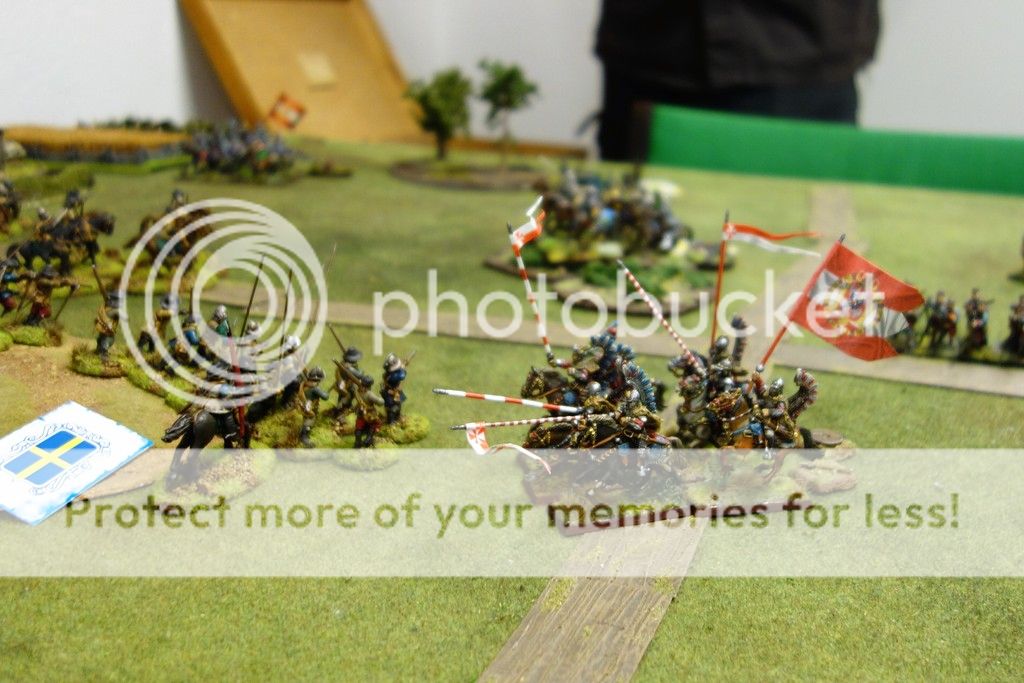
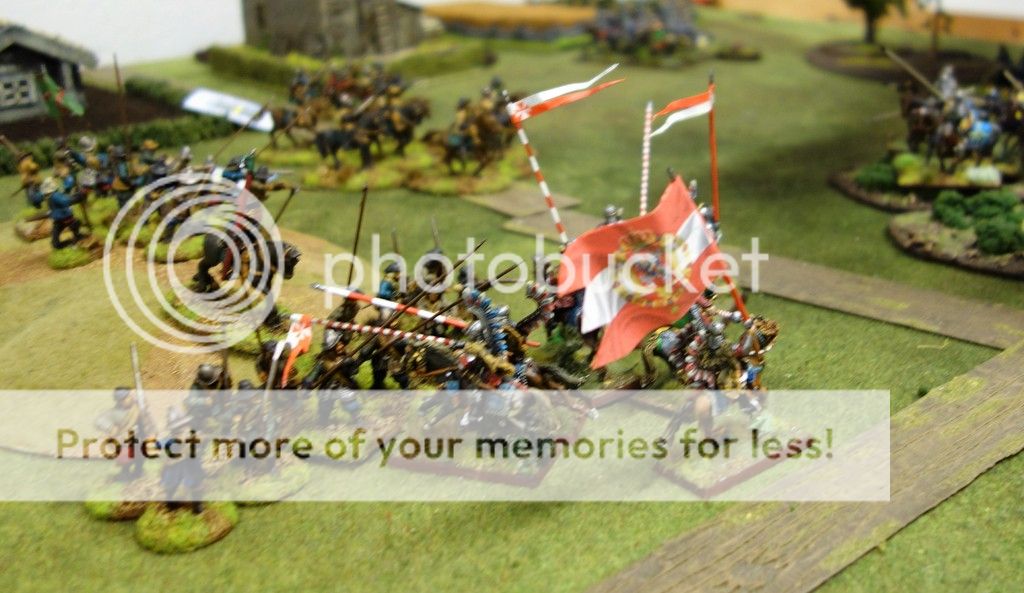
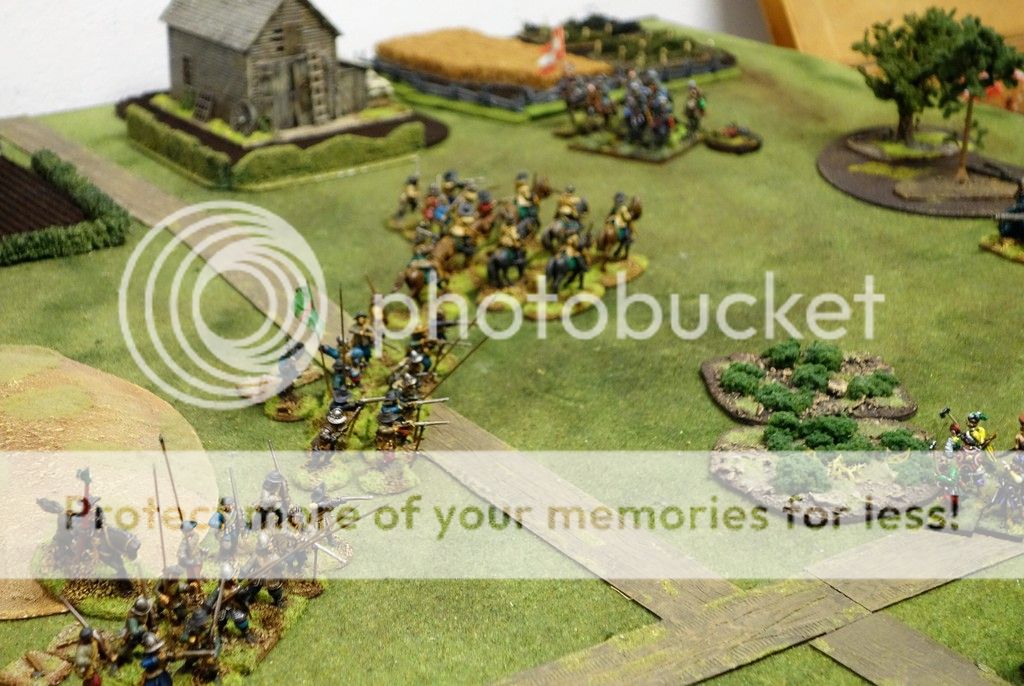
Great looking game.
ReplyDeleteLovely looking game and have never heard of these rules. I've just received my copy of 'Baroque' which looks to be a very good ruleset. Only time will tell though!
ReplyDeleteFine presentable release,
ReplyDeleteand a great topic..
Long tercios story ended,
reason cavalry, and new Swedish light artillery uses
Thanks, guys. I enjoyed Tercio quite a bit. It also happens to be one of my favorite historical periods, which also helps ;-)
ReplyDeleteGreat report! It has helped me enormously. I'm quite taken by the Tercio rules, having looked at the basic game and read several reviews and AAp's. But I had a problem with basing, as I plan to 1-2-3 base for Pikeman's Lament.
ReplyDeleteNice to know it can still work with the Tercio rules as well.